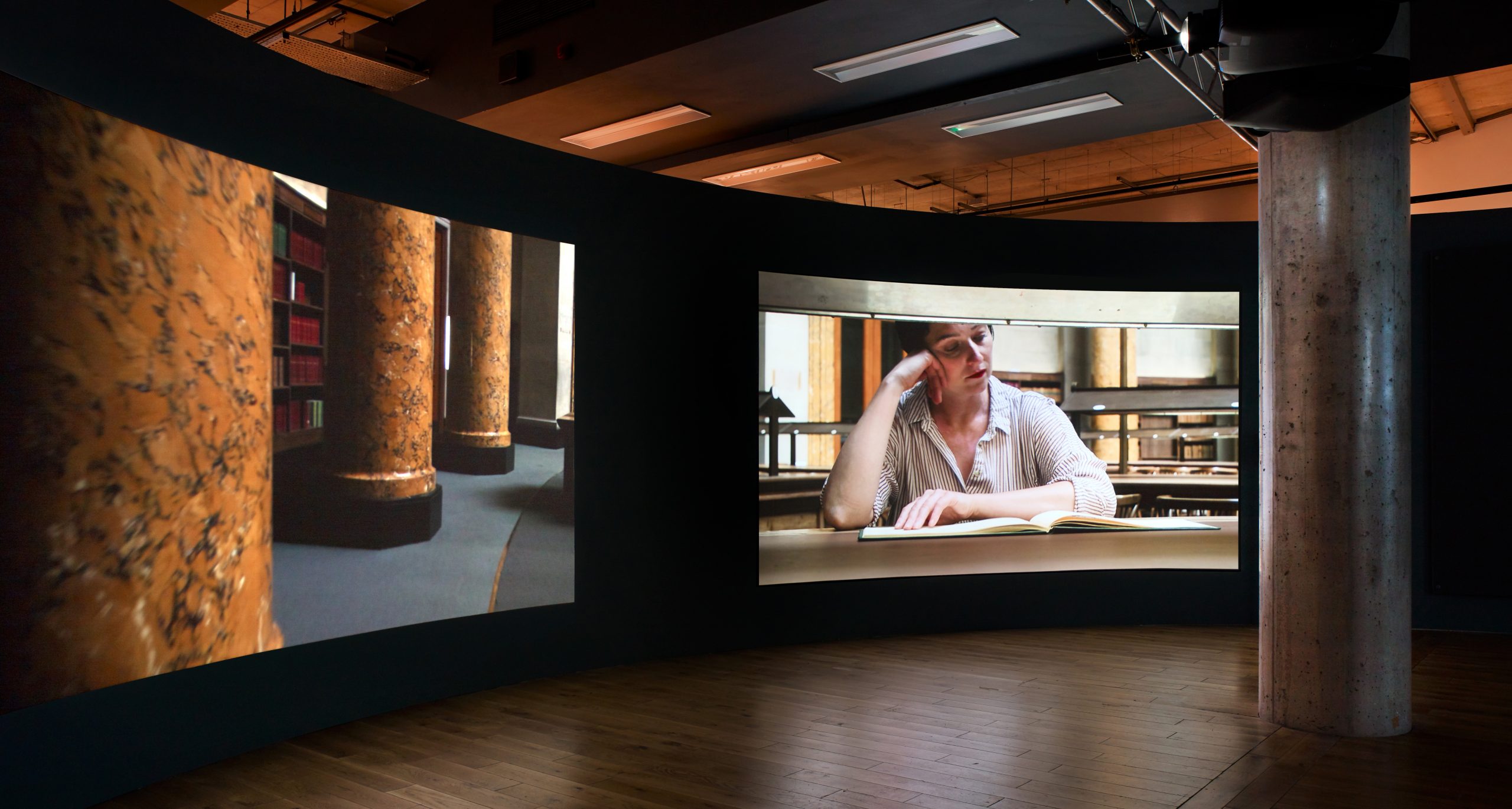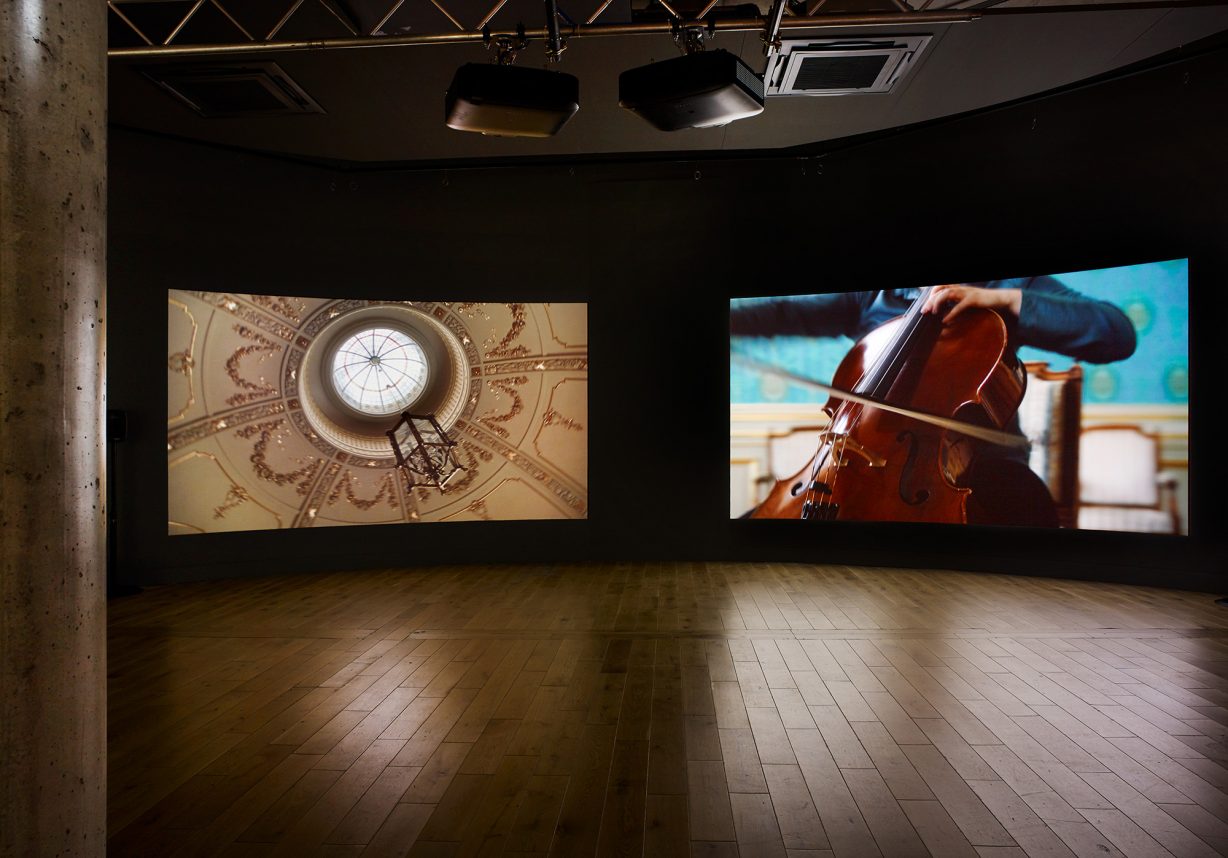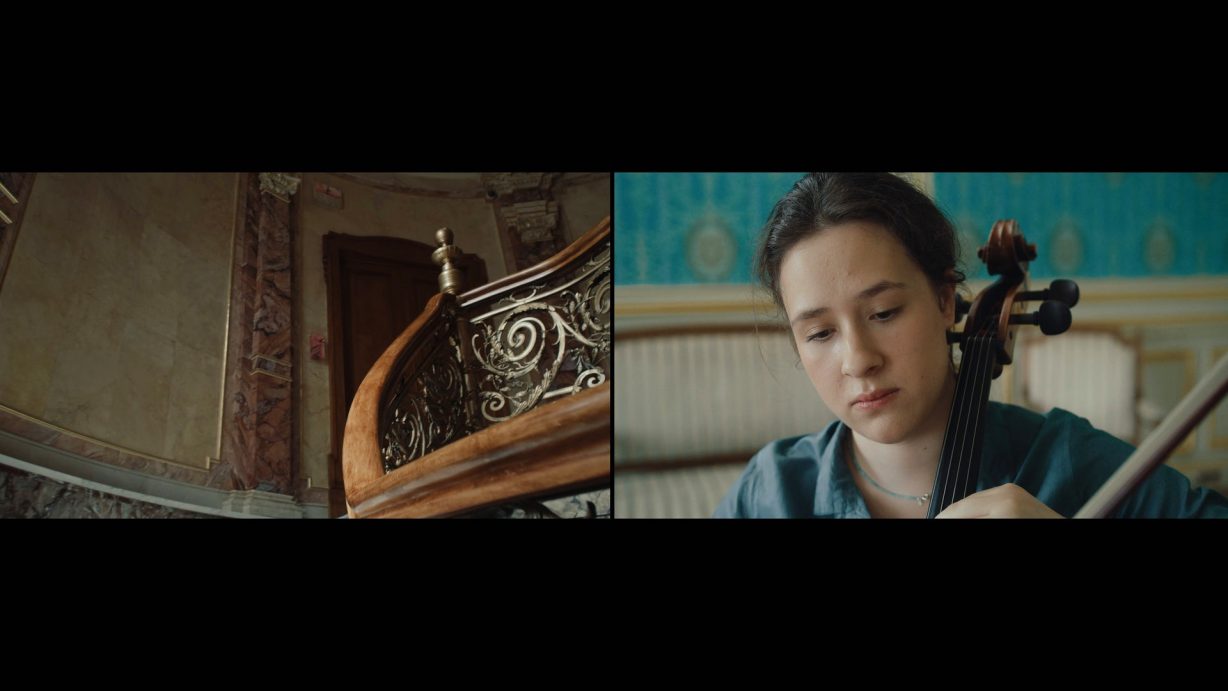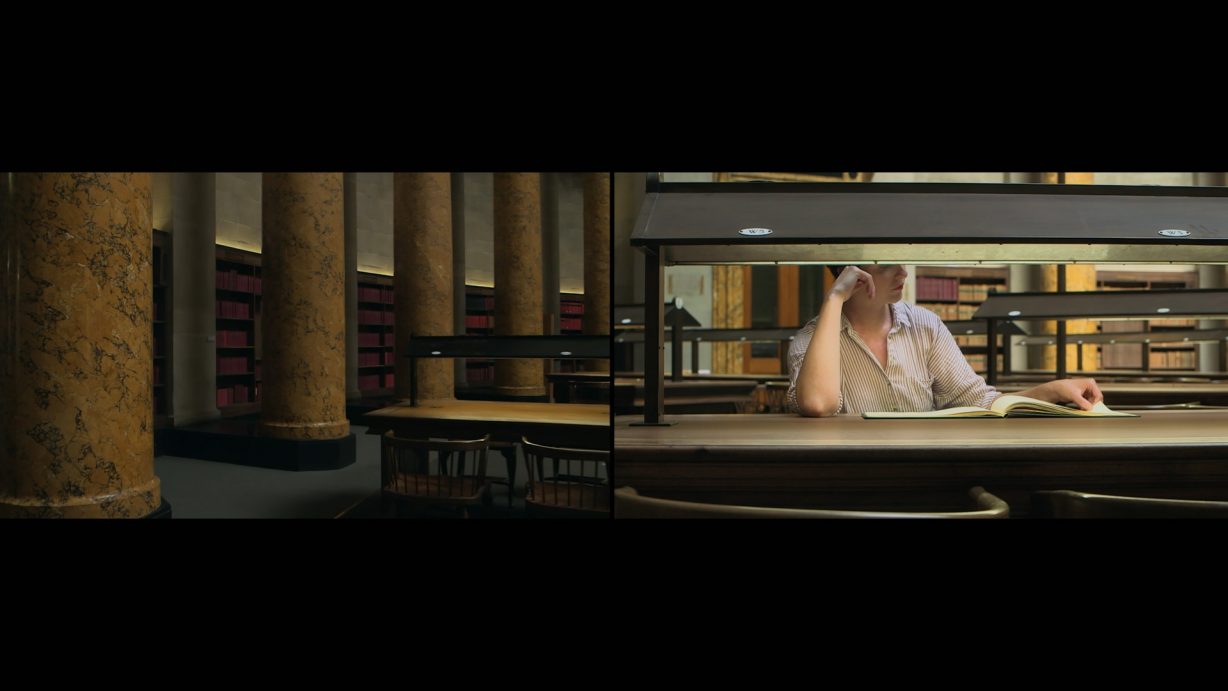
Music and Silence
Music and Silence (2023) was developed for the exhibition
A Fine Toothed Comb at HOME Manchester.
Stawarska has composed the momentous audio-visual installation, connecting Manchester with Łódź, two cities that retain visible traces of the palimpsest of their industrial pasts. The projections focus on two women and how they are affected by the architecture of two buildings, the panopticon-like Central Library in Manchester, designed as a quiet oasis within the busy industrial city 1934 and the richly decorated Karol Poznański Palace 1906, designed by Adolf Zeligson, now a Music Academy.
The women are filmed in the interiors of those buildings. Artist Heather Ross is attempting to listen to and describe the sound of silence in the domed acoustic of the Library’s reading room, while musician Alexandra Rosol rehearses the cello part for Leoš Janáček’s Pohadka (1910/1923) in the Music Academy while listening within her auditory memory for the missing piano part.
Stawarska’s quadrophonic sound composition weaves Alexandra’s cello rehearsal with Heather’s layers of onomatopoeic phrases describing unachievable silence. The composition is placed against a backdrop of field recordings in the resonating circular chamber of the reading room, which is echoed by the circular structure presented in the gallery space of HOME.
Although these are two distinct buildings, their circular architecture is mirrored by the camera movement. In the Library diptych, one camera moves steadily between the rays of the reading room tables while the other statically observes the reader. In the Music Academy diptych, the camera circles around the musician placed on the circular parquet floor of the room, which once was a ‘the lady of the house’s chamber’. The camera and therefore the viewer, is in constant movement and gets very close up in order to observe the performer and their beloved instrument.

Magda Stawarska, Music and Silence, 2023, still
We are privileged to be a intimate observer of this private engagement of someone’s intense listening and concentration. On the other side of the diptych, the camera slowly searches through the empty corridors or the spiral staircase, getting near to the half -opened doors, listening to music; searching for answers.

Magda Stawarska, Music and Silence, 2023, still
Lubaina Himid writes in a letter to Stawarska in the A Fine Toothed Comb exhibition catalogue:
As you promised, the new installation Music and Silence (2023) then takes everything several stages further into a play between the library, a building con-structed in 1930 that takes on the costume of a Greek temple and pairs itself with the Music Academy of Łódź in Poland.
This city of constant regeneration and revival has often been called the Polish Manchester because of its history as an enormous industrial scale textile centre. You explained to me that the building in Łódź started life in 1904-09 as the fabulous home of Karol Poznánski the textile industrialist. As the Nazis took over the city in 1939, destroying synagogues, ghettoising and then systematically killing the Jewish population, they also decided to take over the Poznánski Palace and turn it into a music school for their children.
The interiors, luxurious and extravagant, are as fake as those in the Central Library! This home was the first building in Łódź with central heating and you rightly point out that the businessman Poznánski could have afforded the expertise and creativity of any number of modernist architects but instead chose the comforting safe option of a Florentine palace mixing neo-Baroque, neo-Tuscan and neo-Renaissance.
Across the circular space of the installation we see two women opposite each other. We hear the artist Heather Ross interpreting the sound of silence in the library; this is juxtaposed with Alexandra Rosol, a cellist, rehearsing a piece by Leoš Janáček alone in a room within the Music Academy. One turns the pages of a book about Silence, the other listens to the piano part of the composition Pohádka but we cannot hear it. The musician concentrates on playing the cello part, we listen to her but she cannot see us. Their call and response sends us walking around and around the space, spinning to catch the constant circular motion of the camera as it glides around both of the buildings’ interiors. We follow through doorways, come face to face with windows, marvel at magnificent ceilings and inlaid wooden floors, whizz past packed bookcases and climb again and again up an ornate staircase. The camera and the audience dance to the Music and Silence.[1]
[1] Lubaina Himid, Written on a train from Basel to Berlin, A fine Toothed Comb, published by HOME 2023

Magda Stawarska, Music and Silence, 2023, still


